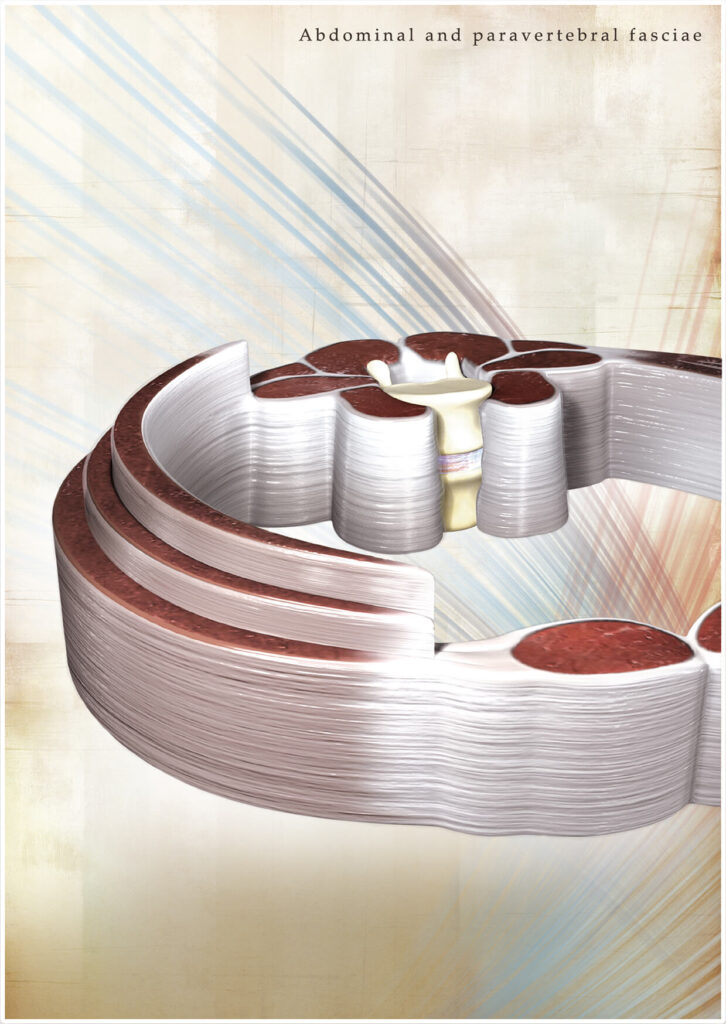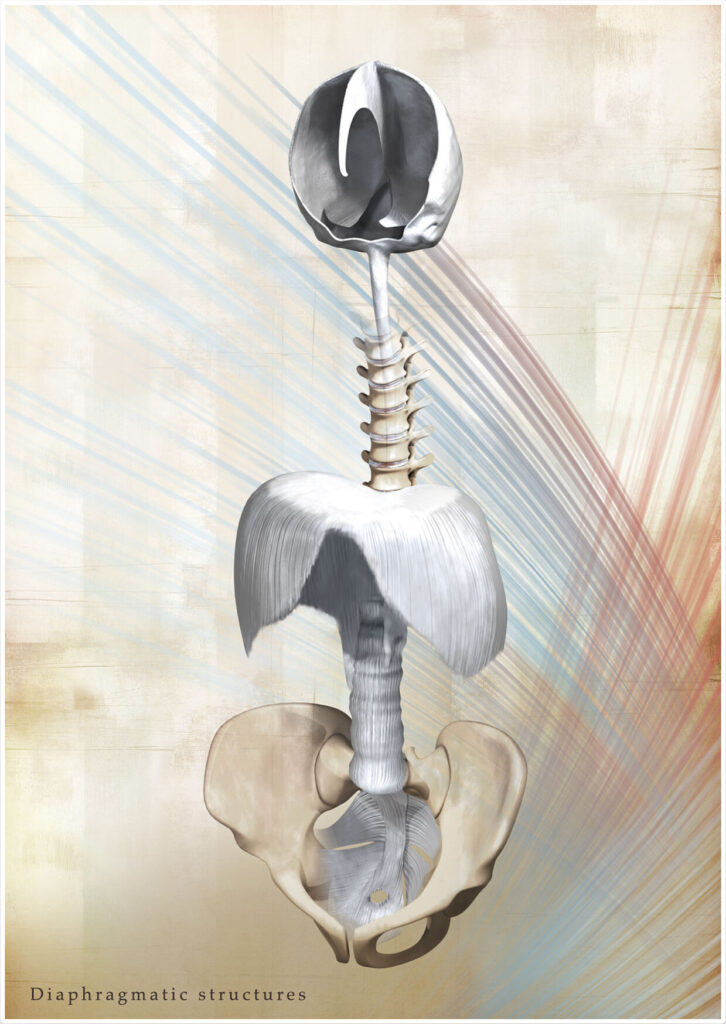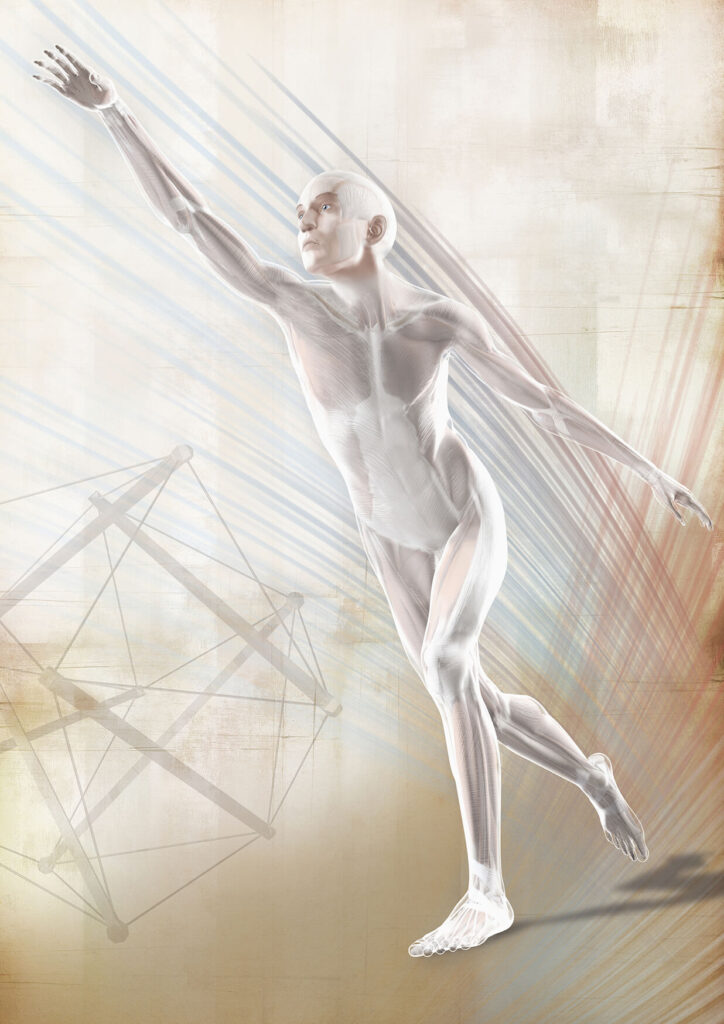Method
1. Improving the mobility of the fascial system.
2. Restoring postural balance and body alignment.
What does it really mean?

Fascial Plasticity (FP) is a gentle manual technique designed to restore the mobility and elasticity of the fascia. By improving the condition of the fascial system, it is possible to positively influence posture, enhance freedom of movement and joint mobility, and reduce swelling, cellulite, and other aesthetic concerns.
FP is neither a massage nor classical osteopathy. This method focuses on addressing fascial dysfunctions and compensatory changes, helping to restore their natural mobility. As a result, posture improves, movements become more fluid and free, and both speed and coordination increase.
Individual and Systematic Approach
The main advantage of this method is its individual and systematic approach. The choice and sequence of techniques are tailored to each person’s needs while always maintaining a holistic view of the body.
Fascial Plasticity helps specialists restore the body’s balance by correcting the positioning of bones and joints and enhancing muscle functionality. These improvements are also reflected in external appearance—reducing the visibility of mimic wrinkles, a “hunchback,” and a double chin, while smoothing facial and body asymmetry and diminishing signs of oedema and cellulite.
Thus, FP is a method that enhances both well-being and aesthetics, helping the body function and appear more balanced.


Thus, Fascial Plasticity is a specialized method focused on balancing the body, restoring the correct positioning of bones and joints, and ensuring healthy muscle function. These changes lead to positive aesthetic improvements in the face and body, including the reduction of mimic wrinkles, neck wrinkles, “humpback,” “double chin,” facial and body asymmetry, cellulite, edema, and other aesthetic concerns.
While the dysfunctions of each body arise from an individual sequence of events, their occurrence is based on common principles. Being interconnected through fascial chains, various body structures respond similarly to environmental influences, as well as internal physiological and psychological processes. For example, upper crossed syndrome (UCS)—often referred to as a “disease of civilization”—results from an imbalance in the muscles of the cervical and thoracic spine & shoulder girdle. Although UCS primarily affects posture in the upper body, its impact can extend to the lower body due to changes in fascial sequences and biomechanics.
UCS causes functional disorders, symptoms, and consequences that significantly affect quality of life, such as neck and shoulder pain, limited range of motion of joints, chronic headaches, respiratory issues, increased anxiety, and more. Functionality and aesthetics are closely related concepts. By influencing posture, UCS also alters the aesthetic appearance of the face and body.
For instance, when the upper portion of the m. trapezius shortens due to fascial chain continuity, the m. occipitofrontalis also shortens. This causes the face to transform visually, by changing from elongated to rounder. The shortening of the m. occipitofrontalis transfers tension to the nasal muscles, which loses its original shape and appear wider, leading to the formation of nasolabial folds. Similarly, the shortening of the masticatory muscles (m. temporalis and m. masseter), which are connected to these chains, results in spasms of other facial muscles .
Benefits of FP
- By unleashing internal organs and bone structures, the posture gets improved
- Increases the amplitude and quality of movements
- Increases flexibility, plasticity and suppleness of the body
- Pain decreases or disappears completely
- Swelling decreases or disappears completely
- Cellulite reduces
- Limitations caused by scars and pain reduces or completely eliminates
- Metabolic processes improve
- The oval of the face improves and facial features change
- Smoothes out wrinkles, improving the quality of facial skin (to get full results for the face, it is recommended to work on the body first)
- Deeply relaxing and calming
- Helps to get rid of “stuck” emotions
Work Protocols and Training for the Fascial Plasticity Method
The work protocols in the Fascial Plasticity (FP) method follow a bio-mechanically structured sequence of therapeutic techniques. The specialist systematically restores fascial mobility, addressing dysfunctions and compensation patterns. To achieve optimal results, it is essential to work accordingly with specific body structures and select the appropriate techniques.
Fascial Plasticity Training
FP training consists of five interconnected cycles that establish a systematic approach to working with the fascial system. Through this method, specialists gain knowledge in:
• The principles of selecting techniques
• The sequence and logic of their application
• Adapting the method to different situations
Upon completing the training, specialists can effectively apply FP to achieve stable results, including:
• Improved fascial mobility
• Restored postural balance
• Positive aesthetic changes
Holistic Approach and Individual Work
Learning the FP method not only enhances professional skills but also helps specialists view the body as a system rather than focusing on isolated problems. This approach allows for a flexible work sequence and intuitive identification of areas requiring additional attention.
For example, when working with the shoulder girdle, a specialist may determine that corrections to the wrist, head, pelvis, or foot are necessary to achieve a harmonious result.
